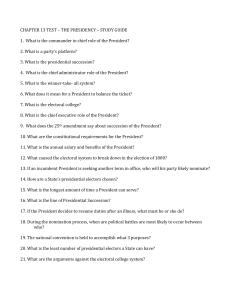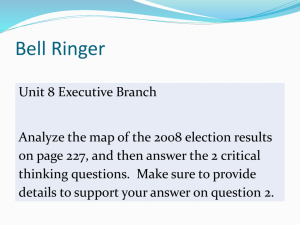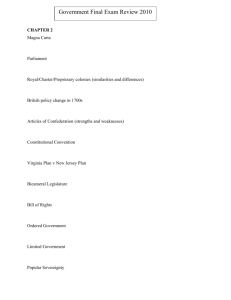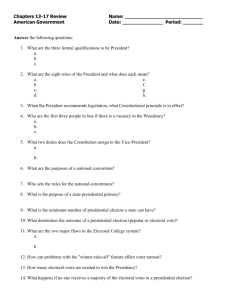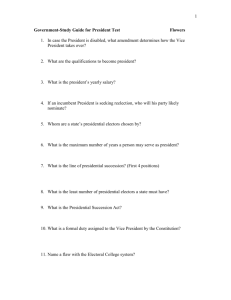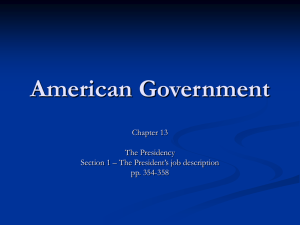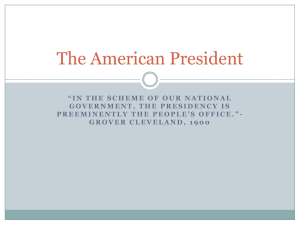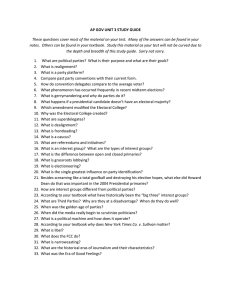American Government Mrs. Holloway Chapter 13 Sec 1
advertisement
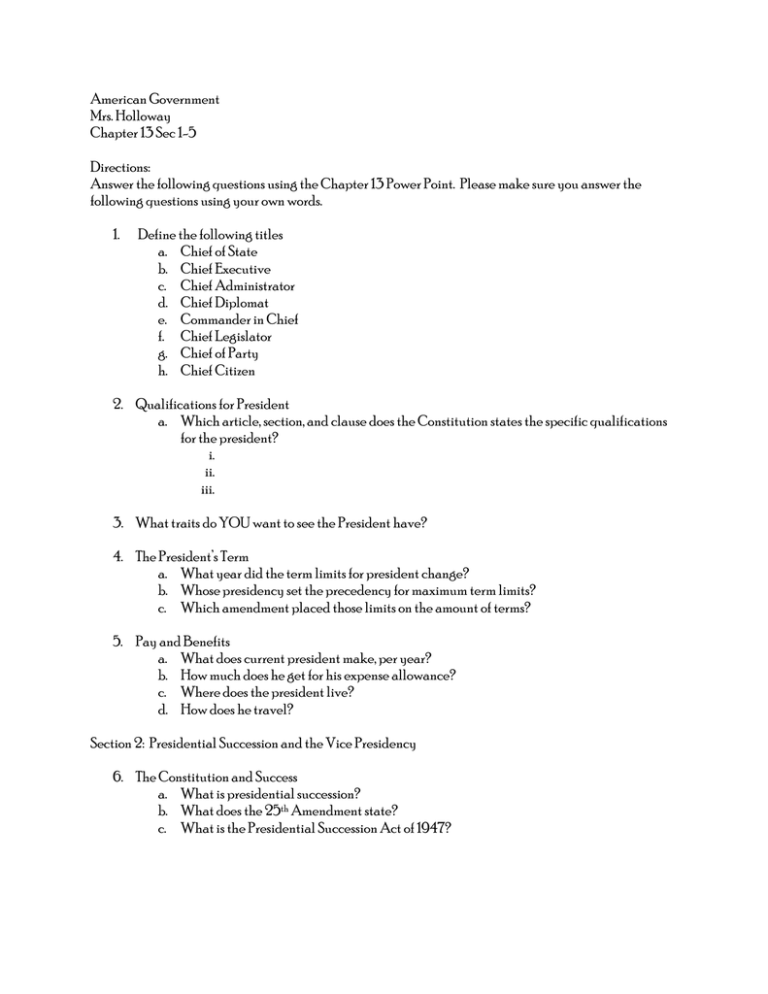
American Government Mrs. Holloway Chapter 13 Sec 1-5 Directions: Answer the following questions using the Chapter 13 Power Point. Please make sure you answer the following questions using your own words. 1. Define the following titles a. Chief of State b. Chief Executive c. Chief Administrator d. Chief Diplomat e. Commander in Chief f. Chief Legislator g. Chief of Party h. Chief Citizen 2. Qualifications for President a. Which article, section, and clause does the Constitution states the specific qualifications for the president? i. ii. iii. 3. What traits do YOU want to see the President have? 4. The President’s Term a. What year did the term limits for president change? b. Whose presidency set the precedency for maximum term limits? c. Which amendment placed those limits on the amount of terms? 5. Pay and Benefits a. What does current president make, per year? b. How much does he get for his expense allowance? c. Where does the president live? d. How does he travel? Section 2: Presidential Succession and the Vice Presidency 6. The Constitution and Success a. What is presidential succession? b. What does the 25th Amendment state? c. What is the Presidential Succession Act of 1947? 7. Fill in the following graph for presidential succession: Presidential Succession 1 2 3 4 5 6 7 8 9 10 11 12 13 14 15 16 17 8. Presidential Disability a. What procedures are to be followed in Sections 3 and 4, of the 25th Amendment? i. ii. 9. The Vice Presidency a. What are the two duties given to the Vice President, besides becoming President, if the President is removed from office i. ii. b. If the VP become President, who fills the VP office? c. What duties does the VP perform? 10. Fill in the chart according to the slide on VP Succession. Vice Presidents Who Succeeded to the Presidency Successor Reason for Succession Section 3: The Framers’ Original Plan for Presidential Selection 11. Analyze the Electoral Map of the 1789 Election. a. How did people vote for the President? b. What did political parties do to this original plan? 12. Original Provisions a. What are presidential electors? b. How were the Pres. and VP chosen? 13. The Rise of Parties a. What is the Electoral College? 14. The 12th Amendment a. When was the 12th Amendment added? b. What was the amendment about? Section 4: Presidential Nominations 15. The Role of Conventions a. What is the convention system used for? b. What is the apportionment of delegates based on? c. What do the caucus and primaries select? 16. The Presidential Primaries a. What is a presidential primary? b. What do they do? i. ii. c. What is proportional representation? d. What is winner take all? 17. The Caucus Process a. Which states use the Caucus Process? b. Read bullets 2, 3, &4 and rewrite in your own words. 18. The National Convention a. What is a party’s national convention? b. What are its three main goals? i. ii. iii. 19. Who is Nominated? a. Do Presidents, who are already in office, usually get their party’s nomination for a 2nd term? b. What is a factor in the nomination process? Who have historically been favored? c. What is another determination of qualification? Section 5: The Election 20. The Electoral College Today a. Which two states DO NOT select electors based on the winner of the popular vote? b. The electors meet where, when, and why? 21. President is Officially Elected a. When are the President and VP formally selected? b. If a candidate does not get a majority of votes, 270, what happens? 22. Flaws in the Electoral College 23. What are the three major defects in the Electoral College? a. b. c. 24. 2 Proposed Plans for Reform a. What is popular election? b. What is the national bonus plan? 25. 2 More Plans for Reform a. What is the district plan? b. What is the proportional plan? 26. Electoral College Supporters a. Two major strengths of the Electoral College i. ii. iii.
